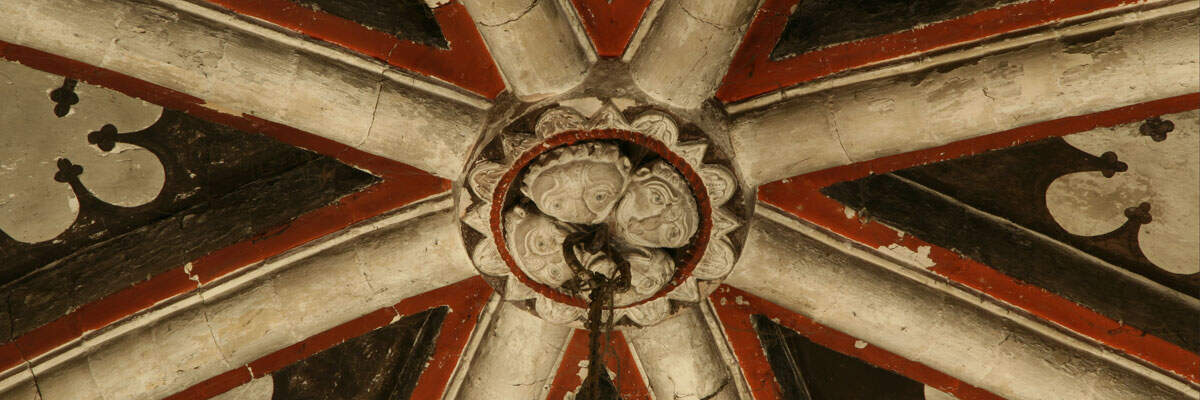St Mary's was a grand aisleless cruciform church in the 12thc. Much of the surviving building dates from the 14thc and 15thc, including the present aisled nave and both transepts, but the lower stage of the central tower is Romanesque, as are the four arches of the crossing, complete with their carved capitals and supports. Above the W crossing arch, on the W face of the central tower - which is also the internal E wall of the nave - there are two decorated Romanesque round-headed openings, one above the other, on slightly different axes. They light the two-storeyed wall passage running around the tower, and also look down into the nave. The openings now serve the bell chamber above the crossing.
The unaisled Romanesque chancel had been replaced by 1405 by an aisled structure, which was itself demolished in 1541. The massive timber Rood Screen of c. 1480s extends across the full width of the nave and aisles. Important wall-painting associated with the screen partly survives in the nave, above the W arch of the tower.
The only Romanesque sculpture at St Mary’s is found on the capitals of the crossing, the W crossing arch, the bell openings and the interior of the tower.



